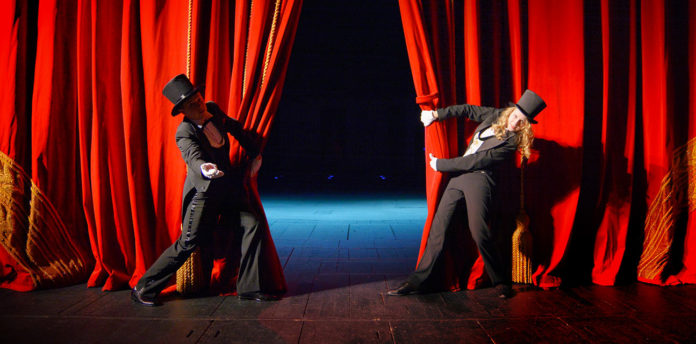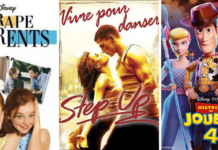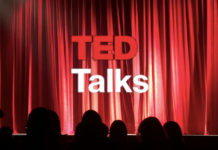Are you a theatre enthusiast? There are thousands of excellent French plays, some are old as time itself and others are only a few years old and already have a cult-like status. If you’re interested in going to the theatre but you’d like to see a French play so you can also practice your language skills at the same time, here is a list of 8 of the some of the best and most famous French plays you can go see.
Theatre is one of the seven arts. It used to be one of the most popular forms of entertainment but once cinema and television exploded, the theatre was outshined and took a backseat. But, there is something to be said for going to the theatre. You dress up, going out to eat before or after, maybe even have a cocktail, and you get to enjoy live theatre. Of course, not everyone can afford to go to the theatre every few weeks or months but there are ways of saving on tickets or you can save up and see this activity as a way for you to broaden your artistic horizons.
Famous French Plays Worth Seeing
Les Belles-soeurs (Michel Tremblay)
Michel Tremblay is known as the father of Quebec theatre. Les Belles-Soeurs was his first professional play and is still to his day his most famous one. If you’re interested in knowing or understanding more about French Canadian culture, this is the play to see. The play is mostly spoken in joual, a working-class dialect frowned upon by the upper class. Not only that but Tremblay also put forth women instead of men and showed these women doing working-class things. The story is about a housewife named Germaine who invites all the women from her neighbourhood to stick the 100 grocery stamps she won into a booklet so she can exchange them for goods. While all the women discuss their husbands and their lives, Germaine does not realize the other women were stealing all her stamps.
Le Tartuffe (Molière)
Molière is one of the greatest playwrights of all time. His ability to make people laugh or cry and his emblematic place in the world of theatre is why you should absolutely see at least one of his plays. We highly suggest you see Tartuffe because it is a comedic play you’ll have a lot of fun seeing. This five-act play was written in the 17th century but it is still current to this day. The story depicts a man named Orgon and his mother who fall under the influence of a pious man named Tartuffe. The rest of the family see’s that Tartuffe is a fraud and try to convince Orgon and his mother but they fall perfectly in his trap and Organ even allows Tartuffe to marry his daughter. After robbing them of their house and possessions, Tartuffe is finally arrested and charged for his numerous crimes.
Les Bonnes (Jean Genet)
Les Bonnes by French dramatist Jean Genet is a great example of a new classic of theatre. The play was first shown in 1947 and is said to be a loose adaptation of the infamous French maid sisters Christine and Léa Papin who murdered their employer’s wife and her daughter in 1933 by beating them to death with a knife, a hammer and a pewter pot. Genet was inspired by this horrific story and wrote his play about two maids that who did elaborate sadomasochistic rituals when they were alone in the house they worked in. Their sexual role-playing consisted of killing their employer and they took turns so each woman could be the murderer and the murdered. Unlike the real-life events, they don’t murder the woman in the end.
La Leçon (Eugène Ionesco)
Eugène Ionesco is a Franco-Romanian playwright and is known as one of the most important figures of French avant-garde theatre and theatre of the absurd. Theatre of the absurd is plays of absurdist fiction centralized on the idea of existentialism. These playwrights wanted to explore what it would be like if human existence had no more meaning or purpose. The story depicts a professor who is waiting for his new pupil to come to his home. While he waits for her, the professor’s maid worries about his health. Once the pupil arrives, the professor gets angrier and angrier as time goes by because of his pupil’s ignorance. The young pupil is so uncomfortable and scared that her small toothache makes her completely ill. The professor murders the pupil which is a great example of using non-sequiturs since it is so absurd. The play ends and the maid is ushering in a new pupil in the professor’s house.
Le Dieu du carnage (Yasmina Reza)
French plays aren’t always old classics. This play is quite recent, having been only created in 2008. Yasmina Reza is not only a playwright but also an actress, a novelist and a screenwriter. She enjoys writing plays about contemporary middle-class issues that many people are familiar with. Her play Le Dieu du carnage is about two sets of parents that meet at one of their houses to discuss what happened in the park with their kids. One of the children hurt the other because he doesn’t want the other child to join his group of friends so the parents decide to have a civilized conversation about how they feel. Unfortunately, the conversation does not go as planned and it quickly degenerates making the parents act like children themselves. The conversation diverges and they start arguing about misogyny, racial prejudice and homophobia.
La Trilogie des dragons (Robert Lepage)
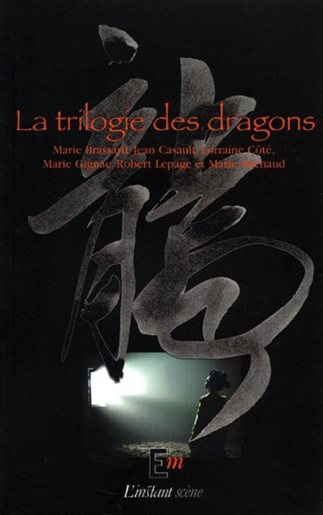
Robert Lepage’s La Trilogie des dragons was created in 1987. Robert Lepage is a very well-known Quebec playwright and has won many awards for his plays. La Trilogie des dragons is a 6-hour play divided into three tableaux and is considered to be a poetic saga. The saga goes through the 20th century, from 1932 to 1985 in three Chinatowns: the first is in Quebec City (green dragon), the second is in Toronto (red dragon) and the third is in Vancouver (white dragon). All throughout the play, mythical components of Chinese culture like Chinese laundries, Chinese food, the yin and yang, tai chi, etc. are presented.
Phèdre (Jean Racine)
No, this is not a play by an Ancient Greek playwright. Phèdre is a 5-act dramatic tragedy written in the 17th century. The play, one of the most famous french plays, is written in alexandrine verse which means that each verse has six iambic feet. Jean Racine is another famous 17th-century playwright that has endured the test of time. He loved neoclassicism and was hugely inspired by the Greeks and their famous tragedies. The play is set in Troezen in Southern Greece where Phèdre declares her love for her husband’s son from a previous marriage (while her husband is away presumably dead). The son, Hippolyte, does not love his step-mother and loves the young Aricia but he is forbidden to love her because she is from an enemy town. Phèdre is embarrassed and decides to seek revenge. Hippolyte is punished by Neptune and dies and when Phèdre goes to explain everything to her husband, she dies at his feet.
Les Quatre morts de Marie (Carole Fréchette)
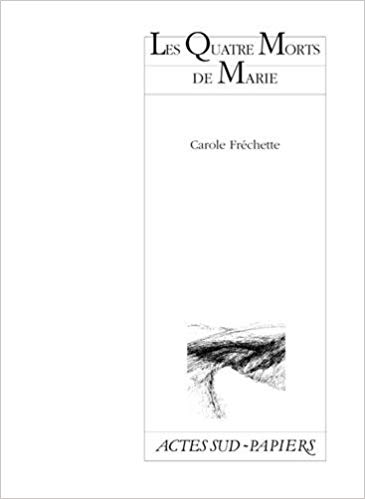
Carole Fréchette is an award-winning French Canadian playwright. Her play Les Quatre morts de Marie, which is one of her greatest works of theatre, is divided into four different parts in which the main character Marie will die each time. Marie is a woman filled with solitude but every time she is finally happy, death looms over her and takes her. From her childhood to her adulthood, the spectator gets to experience and feel the life of Marie.
 Would you recommend any other French plays? If you’re not into theatre, try one of these French short stories.
Would you recommend any other French plays? If you’re not into theatre, try one of these French short stories.

